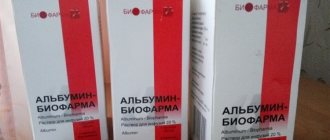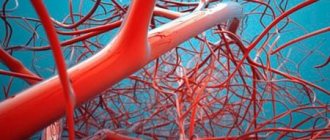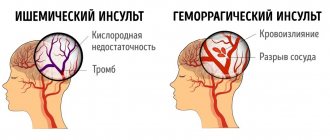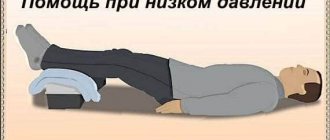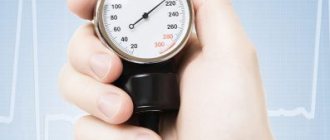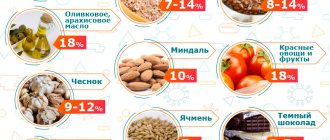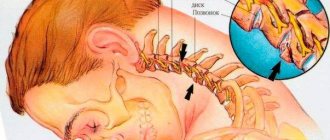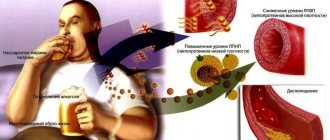Arterial hypertension is a common pathology, which is an indicator of a violation of osmotic pressure inside the vessels.
With persistent high values, the pathology threatens a hypertensive crisis. Along with the upper pressure, the lower pressure, the heart pressure, increases.
However, there are situations when the upper blood pressure remains within acceptable limits, and the lower blood pressure increases.
What pills to use to reduce high heart pressure, and what are the reasons for this phenomenon, should be carefully analyzed.
Letters from our readers
Topic: Grandma's blood pressure has returned to normal!
From: Christina ( [email protected] )
To: Administration otgipertonii.ru
Christina, Moscow
My grandmother’s hypertension is hereditary - most likely, I will have the same problems as I get older.
I accidentally found an article on the Internet that literally saved my grandmother. She was tormented by headaches and had a repeated crisis. I bought the course and monitored the correct treatment.
After 6 weeks she even started talking differently. She said that her head no longer hurts, but she still takes pills for blood pressure. I am sending a link to the article
What is heart pressure
Cardiac pressure is the diastolic indicator, which records the state of the heart in a relaxed state. The parameters obtained during the measurement characterize the state of the cardiovascular system and muscle function, respectively.
Diastolic blood pressure is interrelated with systolic blood pressure, so when measuring, more attention is paid to the upper pressure. However, inflated numbers of the lower one are direct confirmation of a pronounced disruption of the myocardium. This type of pathology is not very common and occurs only in 10% of cases of hypertension.
This type of hypertension negatively affects the condition of the heart. High pressure stretches the muscle layers of the organ, which are replaced over time by connective tissue. Cardiac functions gradually decline and heart failure develops.
Don't tolerate high blood pressure
Now hypertension can be cured by restoring blood vessels...
>
An increase in diastole has a negative effect on blood vessels: they lose their elasticity, which leads to impaired blood flow. Increases the risk of developing strokes of the brain and kidneys, increases the risk of myocardial infarction and severe impairment of the nervous system.
Heart pressure is classified into:
- arterial;
- intracardiac;
- capillary;
- venous.
Arterial values are of particular importance, since this blood delivers oxygen and nutrients to all organs and systems.
Normal SBP numbers range from 60 to 90 mm. rt. Art. The degree of pathology is determined by how high the lower indicators are.
There are the following degrees of elevated SBP:
- Prehypertension - the lower pressure rises to 90, but does not go beyond it. Systolic readings are normal or rise no higher than 139 mm. rt. Art.
- Stage 1 hypertension – diastole increases to 100 mm. rt. Art.
- Stage 2 hypertension – there is a sharp increase in both indicators. The upper pressure is more than 160, and the lower is approaching 110.
- Hypertensive crisis - the heart rate is recorded at 110 mm or higher. rt. Art., and systolic blood pressure approaches or exceeds 180.
The indicators of both types of blood pressure are interrelated, so when measuring it is important to pay attention not only to the upper, but also to the lower numbers.
Symptoms of hypertension
The set of symptoms that characterize a sudden increase in cardiac pressure is as follows:
- tachycardia, arrhythmia;
- constant feeling of nausea;
- retrosternal discomfort, sometimes pain;
- sensation of “thumping” of large vessels, pulsation of the carotid artery;
- migraine pain of varying intensity;
- pastiness;
- hyperhidrosis.
Such symptoms should force the patient to consult a cardiologist in order to understand the cause of the clinical manifestations, make a diagnosis, and prescribe adequate treatment.
Risks of high heart pressure
The main danger of hypertension is the increased risk of ischemic or hemorrhagic stroke, as well as myocardial infarction. Irreversible hypertrophic changes occur in the heart muscle: the wall of the left ventricle thickens and stretches. As a result, a scar of connective tissue is formed.
A slight excess of the indicators increases the possibility of ischemia of the brain and heart muscle by 20 times.
High numbers of diastolic pressure indicate increased work of blood vessels, which lose elasticity and permeability, leading the body to a pronounced malfunction of the vascular system.
Signs of diastolic hypertension
An increase in lower blood pressure does not have a specific clinical picture. However, the course of the pathology is accompanied by symptoms common to arterial hypertension:
- noise in ears;
- headache;
- a distinct pulse in the temporal region of the head;
- tremor;
- pain in the heart area;
- lack of oxygen;
- weakness;
- cold sweat;
- cardiopalmus.
The severity of symptoms increases with increasing blood pressure, and the higher the pressure rises, the more pronounced the pathology.
What does increased DD mean?
The first thing that elevated lower blood pressure indicates is abnormal vascular function at the time of cardiac pause and problems with the renal artery. Its job is to regulate blood pressure. In addition to this reason, increased DD can be characterized, for example, by pathology of the spinal canals. With constantly elevated diastole, completely different diseases are possible:
- heart disease – arrhythmia, defects;
- renal dysfunction;
- problems with the endocrine glands.
Increased lower blood pressure with normal upper blood pressure
It is immediately worth noting that this means increased lower pressure with normal upper pressure, which is present constantly or most of the time. A one-time short-term increase is often a reaction to an external or internal irritant. Stably elevated renal blood pressure (as lower blood pressure is sometimes called) is called diastolic hypertension. It directly indicates the presence of pathology in the body.
Signs of high diastole:
- regular dizziness, ringing or noise in the ears, spots and darkening before the eyes;
- localization of headache in the back of the head;
- pulse (HR) from 100 beats per minute or more;
- difficulty breathing, chest pain;
- sharp cold sticky sweat;
- heart contractions feel like force;
- poor general health;
- weak tone;
- Possible vomiting and nausea;
- nose bleed.
Lower –90
Most doctors believe that a deviation from the norm of 10 mm Hg. Art. may not be considered a problem. The main thing is to pay attention to the presence of symptoms: shortness of breath, tinnitus, frequent headaches, etc. A lower pressure of 90, if it stays constant, is the first sign that there are problems in the body and you need to see a doctor. There is nothing critical about this, but it’s worth getting examined and not removing them. A slight constant increase in diastole may indicate the presence of atherosclerosis - excessive deposition of bad cholesterol on the walls of narrowed vessels, but this is a natural phenomenon.
Lower –95
A DD value of 95 still falls within the limits of mild hypertension (90-99 mm Hg), but this is already a disease for which you need to see a doctor. He will decide how to reduce heart pressure more effectively. There is a wide list of possible reasons (more on this below), an overestimation of pure diastole indicates the presence of a developing pathology. At this stage, with timely diagnosis, most diseases will require minimal effort. If you ignore this indicator, then increased heart pressure will develop into a more severe stage.
Lower pressure –100
Initially, you need to reassure pregnant women - DD 100 (or about this indicator) is present in 80% of women. The kidneys are actively working (especially during the third trimester), and the body accumulates more fluid than normal. After childbirth there is a natural decline. In any other cases, this is already a moderate degree of hypertension. The disease-cause has already fully developed, and the symptoms will only intensify. In this case, you should absolutely know how to lower high blood pressure on your own, what to drink.
Lower – 110
If the lower pressure indicator is 110, then this is already a severe degree of hypertension. The risk of heart attack and stroke increases tenfold, and persistent symptoms of high diastole are constantly present and can only be relieved with pills. Only the symptoms can be removed with medication, but increased DD can only be eliminated through serious medical intervention. However, if these are age-related changes, then in most episodes all that remains is to support the body.
Lower – 120
At extremely high diastole rates, neither age nor pregnancy will be the cause. In 90% of cases, if the DD is 120, then severe renal failure is present. In second place are the critical stages of thyroid diseases. All other causes can rarely give such indicators of elevated heart pressure. It’s stupid to say that this is not just a hint to go to the doctor. The question is different - where is the ambulance for high blood pressure, what treatment?
Lower – 130
The prohibitive indicator is a lower pressure of 130 and above. Classified as malignant arterial hypertension. It is absolutely difficult to treat, because such indicators could appear when the symptoms were completely ignored for a long time. Almost all organs have already suffered severe oxygen deficiency, sclerotic changes in the heart muscle have occurred, renal failure has developed, and degradation of intellect and memory will gradually occur.
Why can only lower blood pressure increase?
Among the large number of causes of hypertension, the leading ones are occupied by the following:
- renal failure;
- endocrine diseases;
- chronic heart disease;
- aortic stenosis;
- thrombophlebitis;
- thromboembolism;
- heart valve insufficiency;
- lesions of the cerebral cortex (trauma, infections, viral diseases);
- congenital anomalies of the heart muscle;
- atherosclerosis of blood vessels.
Since isolated diastolic hypertension is a rare phenomenon, the combination of an increase in both indicators indicates the development of:
- a tumor process in which the pituitary gland is affected;
- dystonia;
- hyperfunctional changes in the adrenal glands;
- hypertension.
The result is influenced by the patient’s age, gender and professional activity.
In addition to the fundamental reasons, there are a number of factors that aggravate the course of the pathological process and negatively affect the obtaining of measurements:
- excess body weight;
- harmful addictions in the form of alcohol and nicotine addiction;
- mental overload;
- large consumption of foods high in cholesterol and sugar;
- maintaining a passive lifestyle;
- complete absence of various physical activities.
Over the course of a long study of diastolic hypertension, scientists came to the conclusion that the pathology is largely associated with hereditary predisposition, VSD syndrome and insufficient intake of vitamins.
Causes of high blood pressure
High heart pressure, how to reduce it with medication, is the main question for patients encountering this phenomenon for the first time. There are many causes of hypertension. In any case, the patient’s well-being worsens over time, becoming a cause that provokes serious complications.
Causes of high blood pressure:
- Unfavorable heredity. It can manifest itself in the form of characteristics of the human body. Treatment of such factors is difficult.
- Wrong lifestyle. If it is normalized, treatment will be much easier. It is enough to balance your work schedule and eliminate bad habits. This is the best option for lowering blood pressure.
- Stressful situations. This cause can be easily eliminated if you take sedatives or herbal decoctions.
- Endocrine diseases. They need to be treated taking into account the symptoms of the disease with high heart pressure.
Heart 90
Diastolic indicator equal to 90 units. indicates the onset of prehypertension - a borderline state of pathology. In old age, these results are a sign of normality, but require additional examination. The reasons for the slight excess of indicators are:
- chronic alcoholism;
- consumption of energy drinks and other substances that stimulate the nervous system;
- glomerulonephritis in the chronic stage;
- smoking;
- binge eating;
- imbalance between calcium and magnesium ions.
Borderline values are common in pregnant women. This is due to an increase in blood volume, especially in the final trimester of gestation. Patients experience shortness of breath, swelling of the lower extremities and tinnitus.
To reduce high diastolic pressure, medications of the diuretic pharmaceutical group are taken, for example hydrochlorothiazide. However, if there are no characteristic symptoms, then it is enough to change the diet and reduce the amount of salt intake.
It is worth noting that if the lower blood pressure does not fall below 90 mm for a long time. rt. Art., and at the same time general disturbances in well-being develop - in total, prehypertension develops.
A general practitioner or cardiologist can diagnose the disease and assess the severity of the pathology.
Reasons for the increase
Heart pressure increases for various reasons, including:
- Myocardial diseases. High lower pressure may be associated with a deterioration in the contractile function of the left ventricle, which occurs in diseases such as heart attack, myocarditis, and myocardiosclerosis. If the venous outflow of blood to the heart is disrupted, this negatively affects the functioning of the heart muscle. As a result, only cardiac pressure increases, while systolic pressure remains normal, since the ejection of blood from the heart does not change.
- Thyroid diseases.
- Kidney pathologies are often accompanied by an increase in lower pressure. This is due to the fact that in case of kidney diseases, the blood flow in them decreases, and this leads to increased release of a bioactive substance (renin), which increases the tone of peripheral vessels. Thus, the resistance of the arterial walls increases, and with it the heart pressure.
- Spinal diseases.
- Obesity.
- Taking certain medications.
Heart 100
In the event that diastole works at full capacity, and the heart muscle, when relaxing, experiences a colossal load due to an increase in intracardiac pressure, a reading of 100 mm is recorded on the tonometer. rt. Art. and higher (105, 107, 109). In no case can this condition be a sign of the norm.
Often the cause of this phenomenon is disturbances in the functioning of the renal system against the background of heart failure.
Chronic pyelonephritis and glomerulonephritis, amyloidosis and decreased blood supply to the only kidney lead to a pronounced imbalance between calcium and magnesium ions, which worsens the condition of the vascular wall.
The danger of high blood pressure
High blood pressure is one of the causes of atherosclerosis. The danger of this disease lies in the fact that the walls of blood vessels have a significant impact: they become clogged with fatty plaques, as a result of which the lumen of the vessel decreases. This disease affects not only large veins, but also capillaries. Often, the progression of this condition contributes to the development of kidney disease. Against this background, kidney failure may occur.
In addition, blood pressure negatively affects the brain. It can be the main cause of coronary heart disease and stroke.
Hypertension also affects the eyes. Indeed, due to increased blood pressure, blood vessels become brittle and fragile. As a result, retinal hemorrhage is possible. This is one of the causes of blindness.
Heart 110
The fundamental symptom of stage 2 hypertension is an increase in blood pressure: the upper one is up to 180, the lower heart pressure is 110. Pronounced changes in the cardiovascular system occur in the body:
- the heart muscle does not relax;
- blood flow in arterial vessels increases;
- the walls of the arteries lose their elasticity and leak lymph fluid into the surrounding tissue.
The tense state threatens the patient's life. With such indicators, a heart attack or acute cerebrovascular accident may occur. The patient requires immediate medical attention.
Sedative medications (Validol, Corvalol) are ineffective at such elevated levels, although they will not be superfluous. While waiting for the ambulance, a Validol tablet under the tongue will calm the nervous system.
Diagram of changes in pressure indicators
Blood pressure is the force with which the blood exerts pressure on the walls of blood vessels. Blood pressure has maximum and minimum values. This disease is treated by various means and methods, the most common of which are: tablets, capsules, intravenous and intramuscular injections. Oxygenated blood flows from the heart to the rest of the organs. Maximum blood pressure readings can be observed when blood flow leaves the heart.
This indicator has the ability to decrease as blood moves through the vessels. The factors that determine the force of pressure in the vessels are as follows:
- vascular resistance;
- strength of heart contraction;
- minute cardiac output.
In medicine, pressure is usually divided into diastolic and systolic. Systole refers to the state when the heart ventricles contract. At this stage, blood enters various circulation circles. Systolic pressure appears during heart contractions. The norm is 120 millimeters of mercury.
Arterial hypertension is the result of increased systolic pressure, which is above 140 millimeters of mercury. Diastolic pressure may rise to 90 millimeters of mercury. If this indicator decreases, it means that the patient has hypotension, the treatment of which differs from hypertension. Pressure is also assessed during the process of relaxation of the heart muscles; it is called diastolic and normally ranges from 70 to 80 millimeters of mercury. Pulse pressure is the difference between diastolic and systolic pressure. In a healthy person it varies from 40 to 60 millimeters of mercury. If your heart pressure constantly rises, you should contact a cardiologist and receive the treatment prescribed by him.
Heart rate 120 and above
Blood pressure 200/120 indicates a hypertensive crisis. It may be primary. In this case, we are talking about an ischemic process in vital organs. That is, either a stroke or a heart attack occurred. It can be determined by external signs and specific symptoms.
Secondary hypertensive crisis is a consequence of pathologies in the heart muscle and brain. An increase in systolic and diastolic blood pressure to extremely high levels is typical for older people.
The indicators are extremely dangerous and, in the absence of emergency assistance, can lead to death.
How to reduce with medications
The diastolic pressure indicator is determined by the degree of tension of the vascular walls and the volume of blood circulating in the system. Therefore, it is necessary to eliminate hypertension with drugs that reduce vascular tone or have a diuretic effect. The first category includes Cardilopin, Normodipin and other similar drugs. The second one includes Furosemide, Papazol, Asparkam.
To understand how to quickly reduce heart pressure, you need to know the names of other groups of drugs.
- Beta blockers: Nadolol, Nebivolol, Vasocardin, Levatol. The action is aimed at restoring the functioning of the heart, thereby reducing blood pressure.
- Angiotensin receptor blockers (ARBs): Losartan, Valsartan, Telmisartan, Eprosartan. These kidney-friendly medications can reduce diastolic blood pressure readings quickly and effectively.
- Calcium channel blockers (CCB): Nifedipine, Adalat, Amlodipine, Norvasc. Tablets from this group block the penetration of calcium into the circulatory system and heart muscle cells. In some cases, they cause swelling of the lower extremities, which is a significant drawback.
- Angiotensin-converting enzyme inhibitors (ACEI): Capoten, Nifedipine. Drugs in this category not only reduce heart pressure, but also prevent the development of complications. However, they often cause an allergic cough.
Sometimes, when measuring with a tonometer, a small interval between systolic and diastolic pressure is diagnosed. How to reduce when there is a small gap between these readings? Unfortunately, no way. There are no medications that increase the difference.
Important! Any drug treatment has contraindications. Therefore, you cannot get rid of the problem by prescribing pills yourself.
You should take medications aimed at eliminating hypertension only after consulting a cardiologist. The same applies to folk recipes.
What to do if your heart pressure is high
Before taking medications to lower diastolic heart rates, you should first seek medical help from your local physician or cardiologist. The specialist will carry out the necessary diagnostic measures to identify the cause of the pathology and prescribe appropriate treatment.
High blood pressure can be reduced by taking antihypertensive medications orally.
Therapy for lower hypertension is complex and includes taking medications of various effects.
What pills to take to lower heart pressure levels
There are no drugs to lower diastole alone. Since the levels generally increase proportionally, medications are used to treat general hypertension.
Groups of medications for the treatment of lower hypertension:
- Diuretic tablets: Furosemide, Veroshpiron, Indapamide. Medicines stimulate the urinary system, causing a frequent urge to urinate. By eliminating excess fluid, blood pressure levels decrease.
- Calcium antagonists in nephron tubules: Nifedipine, Amlodipine. By limiting the access of calcium to the vascular walls, an expansion of the lumen is observed and blood flow is facilitated.
- ACE inhibitors: Liprazide, Berlipril, Captopril. A prerequisite is that the medication must be taken in combination with diuretics.
- Beta blockers: Propranolol, Bisoprolol, Normodin. The blood pressure is reduced by blocking the excess production of adrenaline.
Tablets to reduce cardiac hypertension have two actions: emergency and planned.
- During planned treatment, tablets are taken according to the established schedule. In most cases, the medication is taken once a day. Many pharmacological companies produce complex drugs for the treatment of hypertension.
- Emergency admission is carried out when the lower indicator jumps. When the numbers rise from 94 to 110 mmHg. Art. You can take Nitroglycerin, Captopril, Nifedipine. In addition, you should take diuretics - for example, Veroshpiron.
Medicines should be prescribed by a doctor, but in case of an emergency and rapid increase in blood pressure, you should take the tablets yourself.
Treatment of upper high blood pressure with drugs
Treatment for high blood pressure involves a complex combination of drugs to lower heart pressure. As a result, it is kept at the desired level. The following medications can be used to lower high blood pressure:
- inhibitors containing enzymes;
- calcium channel blockers;
- sartans and diuretics.
"Metoprolol", "Vazocardin", "Betalok", "Egilok"
Metoprolol is a medicine from the group of beta blockers that can have a hypotensive effect, that is, lower blood pressure. Also, after taking this drug, the heart rate decreases. As a result, cardiac muscle contractility and excitability decrease.
To achieve the desired result, therapy must continue for at least two weeks. This drug should not be prescribed in cases of bradycardia and hypotension. Also, Metoprolol is not recommended for those who suffer from heart failure and cardiogenic shock. Medications that increase cardiac tone are prescribed by the attending physician.
"Ramipril", "Enalapril", "Renitek", "Enap", "Berlipril"
To reduce lower pressure, it is recommended to use Ramipril and Enalapril. “Verapamil” or “Atenol” successfully cope with this task. The last drug is a beta blocker that reduces lower blood pressure. They should be drunk before meals. Another excellent remedy is Ramipril. It has a hypotensive effect and quickly reduces lower blood pressure. The reasons for prescribing the drug are as follows:
- chronic heart failure and hypertension.
- suffered a heart attack.
"Bisoprolol", "Biprol", "Biprolol", "Tirez", "Aritel", "Concor"
The drugs belong to the group of beta blockers; they actively reduce blood pressure by blocking beta receptors. Medicines are prescribed by a doctor, a prescription is written, and an individual dose of the drug is selected depending on the clinical picture. The effect is observed just a few hours after taking the tablet, the result lasts for 24 hours. As a rule, the recommended average daily dose of the drug is from 5 to 10 mg.
"Nifedipine", "Cordaflex", "Corinfar", "Kordipin"
Medicines are allowed only with a doctor's prescription. Tablets are taken regardless of meal time at a dosage of 10-30 mg three or four times a day. If the patient experiences a deterioration in health, the drug is administered sublingually, that is, under the tongue. The result in this case appears within ten minutes.
Home methods
Home methods for lowering lower readings are used as maintenance therapy, and are unacceptable for significant excesses of pressure.
Decoctions and infusions of rose hips, currants and cranberries are used as a diuretic. No less popular are sedative natural ingredients: motherwort, lingonberry and valerian. You can make a decoction yourself.
Reducing blood pressure at home helps:
- therapeutic diet without salt and cholesterol-containing foods;
- foot baths with hot water and essential oils;
- mustard compresses on the back of the neck;
- ear massage (no more than 1 minute).
It is impossible to hope that home methods will lead to a complete cure for hypertension.
Indicators not exceeding 90 mm Hg. Art. (that is, normal), can be maintained by non-traditional means, but if the pressure rises regularly, traditional methods will not only not lead to a therapeutic effect, but will also aggravate the course of the pathology.
Excess weight is a common cause of illness
High blood pressure also occurs in overweight people who do not take care of their health, eat junk food and do not exercise. People predisposed to obesity, first of all, need to organize a balanced, proper diet at home and only then use folk recipes to treat high heart pressure.
The basic principle of nutrition for high blood pressure is the exclusion of fatty, fried, salty foods, alcoholic and carbonated drinks from the diet.
All of the above contributes to an increase in cholesterol in the blood and, accordingly, increases heart pressure.
You need to consume about one and a half liters of fluid per day; it is recommended to drink tea, preferably green. A healthy diet should be divided into five equal meals, in small portions; it is better to eat more often, but less. Such nutrition will help not only to get rid of high heart pressure, but also to get rid of extra pounds.
Recipes from traditional healers
Today, traditional medicine has accumulated a huge list of effective recipes to combat high blood pressure. Various infusions of herbs and products help to quickly reduce heart pressure and improve overall health. The most common and effective infusions and decoctions are:
1. Grate half a head of garlic, add a glass of water (boiled), and cool. Take half a teaspoon before each meal.
2. Take a small root of young horseradish, add boiled water and let it brew for one day, then add 150 grams of fresh squeezed carrot and beet juice to the broth. Take one spoon, about 30 minutes before you eat.
3. Mix the squeezed beet juice in equal proportions with honey. Drink 1 spoon of infusion 10 minutes before meals.
4. Grate a small valerian root, add 250 ml of water, leave for at least two hours. Now it’s worth consuming 1 tbsp. spoon, about 30 minutes after eating.
5. Mix 3 drops of aloe (its fresh juice) and a teaspoon of boiled water. Take every morning for 2 months.
6. Pour dried blackcurrant berries with water (boiled) in equal proportions, then cook for 5-7 minutes. Let it brew for a bit, and only then is it allowed to strain. Take 5 tablespoons before each meal.
Expert opinion
High diastolic pressure can be caused by heart failure, kidney dysfunction, and endocrine pathologies. To restore normal values of this parameter, it is necessary to be examined in a medical institution and obtain advice from a specialized specialist (therapist, cardiologist, endocrinologist).
There are also traditional methods of lowering heart pressure, but their uncontrolled use is fraught with various complications from the cardiovascular system or the urinary system. Decoctions and infusions of lingonberry and cranberry leaves/fruits increase diuresis, thereby reducing blood volume and diastolic pressure. Warm baths with essential oils also restore normal well-being.
7. Take 150 grams of sunflower seeds, pour 2 liters of water (boiled). Leave to simmer over low heat for about 2 hours, then strain the broth. Take 100 grams before each meal.
8. 20 grams of dried tansy flowers, pour 1 liter of water (boiled), let the broth brew for at least 5 hours. Take 3 tablespoons half an hour before each meal.
9. 30 grams of dried hawthorn flowers, pour 1 liter of boiled water. Take 200 grams after each meal.
10. Pomegranate peel, pour boiled water. Take a glass three times a day.
11. 20 grams of dried lily of the valley flowers, pour 2 cups of boiled water, let the broth brew for at least 2 hours. Take 3 spoons after eating.
12. Pour 100 grams of bay leaf into 1 liter of boiled water. Take 2 tablespoons before each meal for 7 days.
13. Mustard plasters placed on the calves and shoulders for half an hour will be no less effective. You can also use apple cider vinegar, soak a gauze bandage in the infusion and wrap it around your feet for half an hour.
To achieve a more effective result, it is necessary to know the cause of high heart pressure; none other than the attending physician will help with this, who will identify the problem and prescribe the course of necessary treatment.
Low blood pressure diet
Traditional medicine claims that what we eat is how we feel. This is quite natural. After all, the cardiovascular system directly depends on the activity of the digestive system. If you ate or drank something, your blood pressure jumped or, conversely, fell. An interesting fact is that people suffering from low blood pressure are in most cases vegetarians. But this does not mean that with low blood pressure you need to immediately lean on meat. Everything should be balanced and correct, this is a healthy approach.
The diet of a person suffering from high blood pressure should contain the following foods:
- rich in fiber content;
- with a high content of vegetable fats and proteins;
- red natural grape wine is not excluded in reasonable quantities;
- fresh juices, especially pomegranate.
Patients on a diet are generally not recommended to take medications to increase blood pressure. It’s also not worth getting carried away with coffee, counting on its effective help. Avoid alcohol, stop smoking. Indulging in bad habits can lead to negative results in treatment.
Blood pressure rises and returns to normal when eating small portions of food: 4-6 times a day. Drinking plenty of fluids - at least two liters - is also recommended. Now, more specifically about the products themselves needed in the daily menu, these are:
- fatty meats;
- sea fish and seafood;
- honey;
- nuts;
- vegetables, but without beets;
- greenery;
- fruits;
- dairy products;
- any types of cereals.
A diet for hypotensive patients does not prohibit the consumption of baked goods and white bread. Food should contain large amounts of protein, fat and protein. Oddly enough, but with low blood pressure, it is recommended to consume foods that are prohibited for many other diseases. And such food cannot be called healthy. The diet can include:
- smoked products;
- spicy dishes;
- grilled meat;
- chocolate;
- coffee, no more than three cups per day;
- salted and pickled vegetables;
- carbonated drinks.
Hypotension is often accompanied by mild anemia. Therefore, nutritionists recommend eating foods high in iron, namely:
- all types of cabbage;
- apples;
- buckwheat;
- grenades;
- liver;
- spinach;
- dates;
- prunes;
- dried apricots;
- raisin.
Blood pressure can quickly become elevated after eating avocados. The fruit contains a large amount of potassium. This microelement can quickly normalize indicators.
It is important to remember to eat frequently, but not plentifully. Cardiologists even advise carrying a constant snack with you.
It could be nuts, chocolate bars. A slight feeling of hunger can provoke a sharp drop in blood pressure.
Treatment
It depends on the reasons for the increase in diastolic blood pressure. Once the disease causing the increase in lower blood pressure is determined, the attending physician will determine which treatment will be optimal. Most often, blood pressure is reduced with the help of drugs. If medications do not help, and there is a risk of developing severe complications, surgery is indicated (correction of vascular abnormalities, replacement of the aortic valve, etc.).
In some cases, the cause of the increase in lower blood pressure cannot be determined. Then symptomatic treatment is prescribed, the purpose of which is to reduce blood pressure.
In order to lower blood pressure levels, it is not enough to take medications. It is important to follow a daily routine, adhere to a diet, and eliminate smoking and alcohol.
Mode
With high blood pressure, proper rest is necessary: it is advisable to sleep not only at night, but also during the daytime. A quiet hour can be replaced by a walk in a quiet place, during which it is advisable to relax and disconnect from everyday worries. If possible, it would be a good idea to take a short nap during your lunch break - 10-15 minutes.
A person who has established relaxation becomes calmer, many ailments go away, including high blood pressure
Physical education classes can be useful for diseases of the heart and blood vessels, but they should only be done in consultation with the attending physician.
Nutrition
The diet should be designed in such a way that foods include vitamins and minerals important for heart function. Cardiologists usually recommend dairy-vegetable foods. And, of course, it is important to reduce weight if you have extra pounds and maintain it at normal levels.
The basic nutritional rules are as follows:
- You need to include more berries, vegetables, fruits, and herbs in your diet.
- Low-fat dairy products, lean fish and meat must be on the table.
- Cereals are very healthy: grain bread or wholemeal bread, porridge, especially buckwheat, oatmeal, and rice.
- You can leave the salt, but you need to reduce your consumption.
- It is better to avoid smoked, salty, spicy, rich, sweet and fatty foods or eat them in minimal quantities.
- Reduce tea and coffee consumption, eliminate alcohol and soda.
Drug treatment
If you have high heart pressure, you cannot do without taking medications. To lower blood pressure, drugs of several groups are prescribed, sometimes in combination.
- Diuretics. Diuretics lower blood pressure by removing excess fluid from the body. For hypertension, drugs of the thiazide group (Indapamide, Dichlorothiazide) are most often prescribed.
- Beta blockers block the production of adrenaline and thus reduce the load on the heart (Tenormin, Normodin, Sectral).
- AFP inhibitors block the production of a kidney enzyme that promotes vasoconstriction (Captopril, Enalapril).
- Calcium antagonists, or calcium channel blockers, prevent calcium from entering the cells of the vascular walls and heart. Thus, they dilate blood vessels and make it easier for the heart to work. These include Verapamil, Nifedipine and others.
other methods
What to do if your lower blood pressure suddenly increases and you don’t have any medicine at hand? At home, you can use ice. The patient should lie head down, and his assistant should cover the back of the neck with ice. Try to keep the cold as long as possible. Most often, this method helps reduce heart pressure, but if it remains high, you should definitely call an ambulance.
To reduce heart pressure at home, you can use traditional methods. Tincture of cedar cones helps well. You will need half a liter of vodka, four small cones, a teaspoon of valerian (tincture) and five tablespoons of sugar. Combine the components and leave in the dark for about two weeks. You need to take the prepared tincture every day at night. Dosage – one tablespoon.
Some folk remedies may even be very effective in normalizing blood pressure
